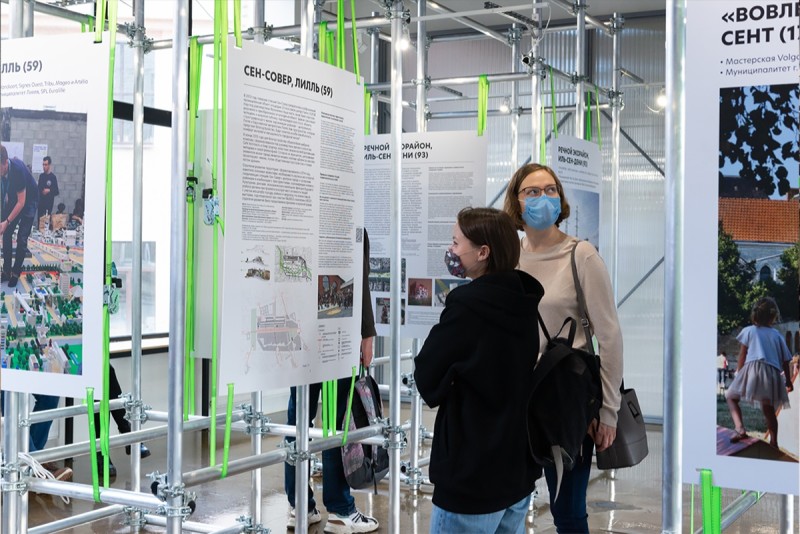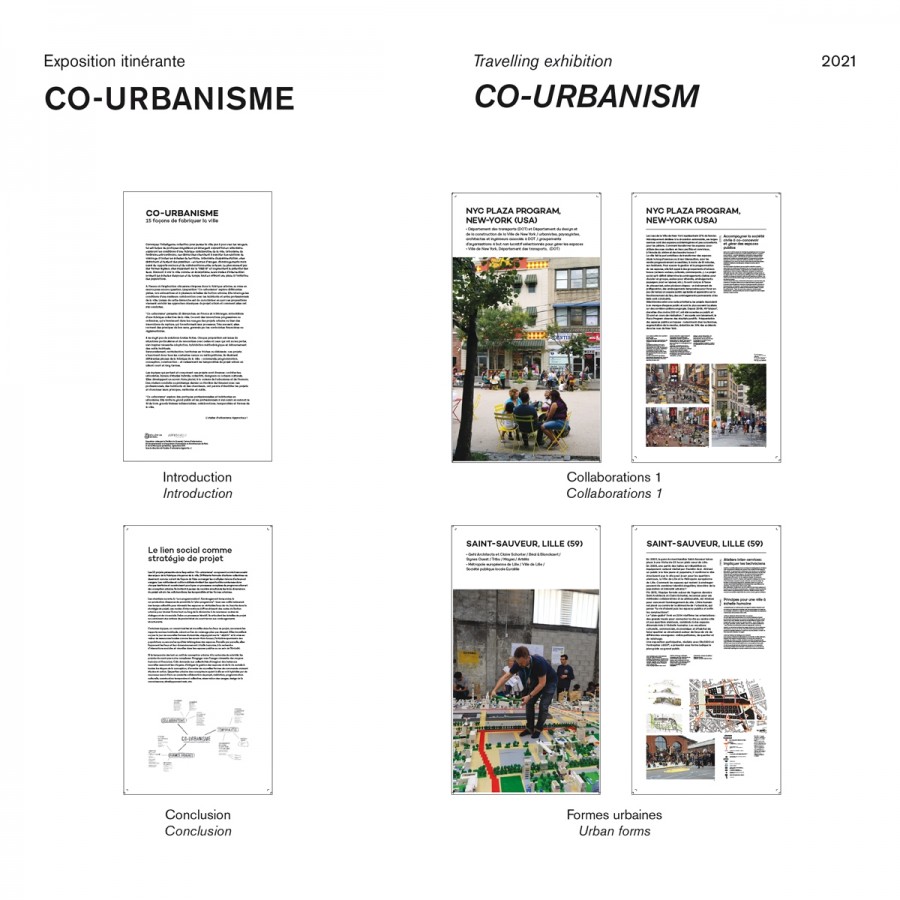Convoking collective intelligence to think a city step by step with its commuters, is a challenge of collaborative urban practice which emerges nowadays. When citizens’ influence is essential to the urban fabrication, the exhibition “Co-urbanism” explores different trails and interrogates the conditions of its realization for a better cohabitation between the citizens and the professionals through 15 different approaches, in France and abroad.
Public spaces co-conception and management, ephemeral equipment support of social activation, foreign universities and non-programmed spaces, co-programming tools, program map, and open conceptions, 15 analyzed approaches in this exhibition are ordinary or progressive innovations which interfere in the cities or innovations of rupture, which transform their processes.
According to the Collective Approche.s!, these projects « often revive the principals in good way, erased by the financial or regulatory constraints. The challenge of this approach is to define how these propositions would enrich the classical approaches of urban projects and how they are applied. It does not act to the general solutions. Each project comes from a particular situation and from the encounter with who knows about it, and is inspired by adaptation, methodological hybridation and diversion of common tools ».
The teams which bring and devise these projects are diverse : architects, urbanists, offices of interdisciplinary studies, publics, designers or cultural actors. They develop plural know-how, at the cross of urban and human. The workshops brought last spring at Pavillon de l’Arsenal with the professionals, the habitants and the researchers, have permitted to identify the projects and to analyze their principles, methods and tools.
Urbanism of extraordinary ordinary, these approaches try to spark off neighbourly relations in all domains. Experimental urbanism, they prepare for testing the possibilities – in terms of customs, of planning but also of the social relations and of the relationship between the actors. Most often by the subtle forms, they rely on the “déjà là” and increase the potentiality of the place. By considering the city as an ecosystem, their ways of intervention cross the extent of space and time, all to offer a place on the initiatives of the populations.









